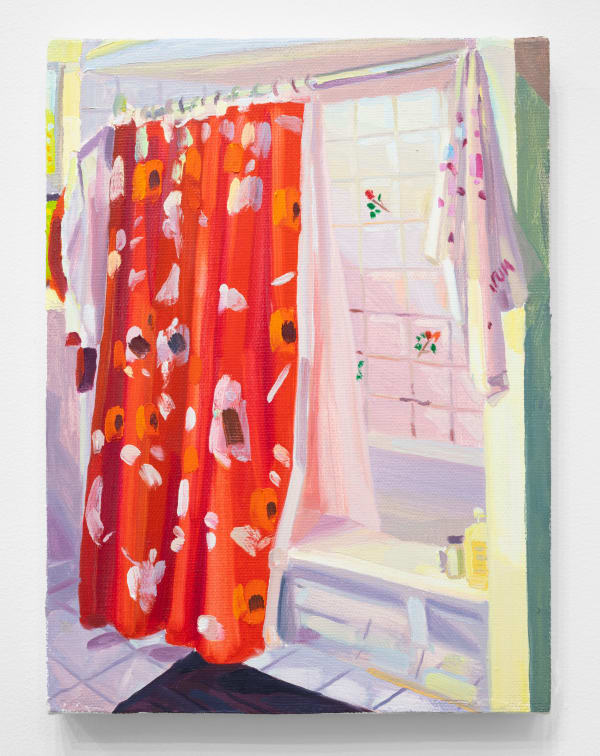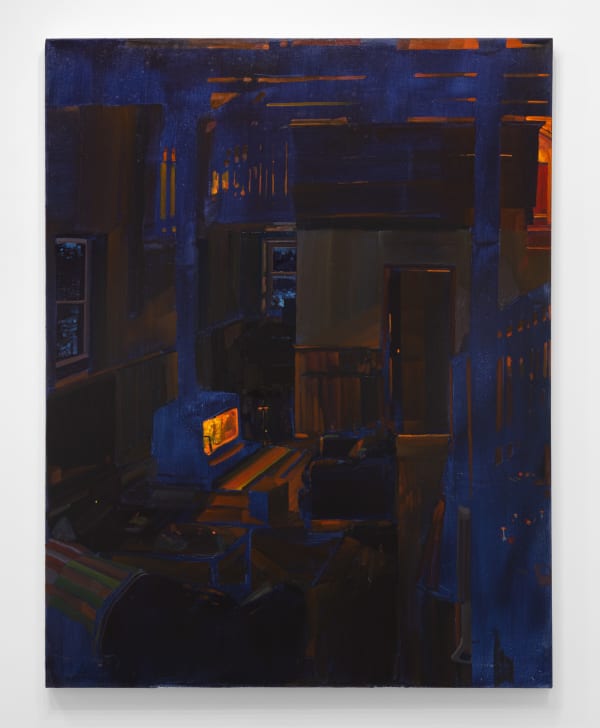Keiran Brennan Hinton: Towards Sentimentality
Charles Moffett is pleased to present Towards Sentimentality, a solo presentation of 18 never-exhibited paintings by Keiran Brennan Hinton (b. 1992, Toronto; Yale MFA 2016), who is based in New York but returned to his homeland of Canada for the pandemic lockdown. While Brennan Hinton’s past work has been about observing and documenting the lives of others, his forced pandemic isolation yielded his first presentation composed entirely of works pertaining to his own life.
Charles Moffett is pleased to present Towards Sentimentality, a solo presentation of 18 never-exhibited paintings by Keiran Brennan Hinton (b. 1992, Toronto; Yale MFA 2016), who is based in New York but returned to his homeland of Canada for the pandemic lockdown. While Brennan Hinton’s past work has been about observing and documenting the lives of others, his forced pandemic isolation yielded his first presentation composed entirely of works pertaining to his own life.
The principal focuses of Brennan Hinton’s practice include the formal painting process; the act of observation; reflections of domestic intimacy; the plein-air discipline; and interiority. For the new exhibition in particular, the conceptual thrust combines the intrigue of the 1918 schoolhouse building, and its historically layered qualities, with the notion of finding beauty in the mundane (as many were forced to do during the pandemic). It’s also about capturing the essence of what allows humans to feel ‘at home.’ Summed up in Brennan Hinton’s own words, “I hope to preserve the feeling of intimacy and closeness I’ve felt this , with the people I’ve been with and the spaces I’ve lived in.” He adds: “This kind of vulnerability is new for me.”
Brennan Hinton grew up in metro Toronto. He and his recently-retired-schoolteacher mother, who are “city people” to the extent that neither of them had a driver’s license until this year, bought a century-old schoolhouse in rural Ontario, unknowingly at the start of the pandemic. The building had been crudely converted for residential living but retained the majority of its historical character and untouched architectural details. The school, which closed in 1967, was a fixture of the small town, hosting no more than 60 pupils at any given time (several of whom, now in their 60s and older, have stopped by in the past year to see the state of Brennan Hinton’s residential conversion). Evident in the exhibition’s paintings are signs of these past personal histories – the pink and blue gendered entrances; the antique coat hooks; the milk glass light shades (which the artist found at a local antique shop and restored to the schoolhouse). “The interior of the space has served so many different lives,” Brennan Hinton explains, “and I often wonder about the small record we leave on the spaces we move through and how those spaces become a container of memory.”
Eleven of the paintings in the show, which explore personal histories through the details of the 1918 schoolhouse, were created in sequence as the artist slowly settled in, transforming the schoolhouse into “home” when he realized that what was originally intended as a part-time country art studio at his mother’s new house would indefinitely be his sole residence. Another seven works, rendered at a quarter-scale of the smallest schoolhouse paintings, were created when restrictions loosened. The setting of these seven works is the small Toronto apartment of the person Brennan Hinton had started dating just before the pandemic. The two sets of paintings employ the same conceptual approach of quickly capturing a distinct moment in time, but whereas the schoolhouse paintings are about settling into a specific building, the smaller works are imbued with a different notion of ‘home.’ Created during short weekend visits with his new girlfriend, they carry the decided warmth of a new relationship. One of the more striking examples of the differentiation is the unassuming figurative presence of Brennan Hinton’s girlfriend in Tatum Working (2020).
The exhibition’s title, Towards Sentimentality, is a theoretical continuation of Susan Sontag’s seminal Against Interpretation essay, in which Sontag rejects the practice of applying complex readings to artworks. She instead embraces the sensory experience of experiencing art for its forms and aesthetics. Brennan Hinton agrees, but with a caveat; “I’m not sure there are interpretations, or metaphors, to be found in this work, but there is feeling. Sentimentality is a taboo term in art; it reads as saccharine, as a way to manipulate emotions. I think those associations are born out of a fear of being vulnerable, stating something plainly, or showing with words but with images. But I have accepted that sentimentally is a running theme in this work. The paintings are dedications, notes in a diary, love letters, and daily meditations. I want the work to be accessible, sensitive, and subtle. Against Interpretation / Towards Sentimentality; it’s about turning towards more personal content, allowing the paintings to be sentimental as well as to articulate my feelings towards painting itself.”
In terms of finding beauty in the mundane, the moments that compel him to choose a particular painting subject are fueled by feeling but often incidentally rooted in parallels with specific art historical references. The perspective of Schoolhouse Bath (2021), which depicts the main schoolhouse bathroom that Brennan Hinton built, includes the bathroom mirror’s reflection of the artist and his painting setup. The ‘freeze frame’ made him think of Pierre Bonnard’s ca. 1930s bathtub paintings, as well as how reflection and mirrors function in Diego Velázquez’s Las Meninas (1656) and Jan van Eyck’s Arnolfini Portrait (1434). Nighttime Apartment (2020) captures a moment where Brennan Hinton opened the bedroom door at his girlfriend’s, and the intensely warm light cast across the ceiling reminded him of a 15th-century annunciation painting, how light through the window carried a symbolic transformed a mundane interior into a sight of significance. Shower Curtainweight that (2020) came about when Brennan Hinton was showering at his girlfriend’s and noticed that the way the light filtered through the red Marimekko shower curtain and reflected a soft pink hue onto the tiles reminded him of the colored windows of a Luis Barragán house or a Doug Wheeler art installation.
Brennan Hinton’s practice relies on ‘felt space’ rather than learned linear perspective or the prioritization of technical accuracy. He describes his formal process as such: “I paint from observation. I start with a limited palette, mixing the colors specifically from life, paying attention to the temperature of the light or saturation of a shadow. I am interested in capturing tactility and texture; how the limited range of textures available in a brushstroke can articulate different senses. The evidence of my process—paintstrokes and removal—remain visible in the final painting. The medium of painting, both the history and process, is primary to my practice; the subject of the work is often secondary. Painting, for me, is an exercise in patience and concentration, which requires a willingness to be surprised. It is about looking without assuming or generalizing. It is an invitation to linger on everyday life and to become aware of the details that previously blended into the surroundings.”
“There can be an initial experience of beauty, but that can be fleeting,” continues the artist. “I want to capture the moments that will buzz and last at a low volume, always present if you're able to pay attention. Especially with out-of-view light sources, I love the possibility for a painting to be about cinematic anticipation, particularly within a familiar space. I believe we've all had moments like this, where we were caught off guard by the lighting of a scene to the extent that the intensity carries an emotional quality. I find the tendency is to be shy and private about these moments because they're fleeting and often private, but I want to sit in these moments, look at them longer, hold onto them, and provide little jewels of mundane life that can be transformed into something beautiful.”




















